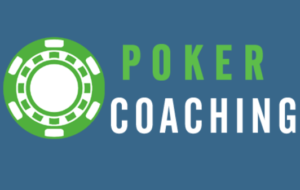 A long time ago in a galaxy far, far away, I found myself on the bubble of the $10,000 buy-in 6-handed WSOP event. This bubble will be remembered by all involved because it lasted three and a half hours. There were two very short stacks of 15,000 (3 big blinds) who were clearly trying to sneak into the money. Their presence forced the all players with medium stacks to play a snug strategy because going broke before someone who has 3 big blinds on the bubble is a disaster.
A long time ago in a galaxy far, far away, I found myself on the bubble of the $10,000 buy-in 6-handed WSOP event. This bubble will be remembered by all involved because it lasted three and a half hours. There were two very short stacks of 15,000 (3 big blinds) who were clearly trying to sneak into the money. Their presence forced the all players with medium stacks to play a snug strategy because going broke before someone who has 3 big blinds on the bubble is a disaster.
About 30 minutes after we started playing hand for hand on the bubble, with blinds at 2,500/5,000-500, a strong tight, aggressive player raised to 12,000 out of his 400,000 stack from first position. With 430,000, I called on the button with Ad-Td. A tight player with 150,000 who made it clear he wanted to get in the money called from the small blind. A loose, aggressive player with a 300,000 stack who enjoys fighting for every pot decided to 3-bet to 57,000 from the big blind. The initial raiser folded.
At this point, I had to figure out if the 3-bettor was willing to put his entire stack at risk on the bubble with a marginal hand like A-Q or 8-8. Given one player at our table had 3 big blinds, it was clear to the big blind that he could get in the money by playing a tight strategy for a few orbits. However, since he is known to attack any situation he thinks is profitable, I thought he could be well out of line, trying to push everyone (even the big stack) around on the bubble. If I had a 300,000 stack, I would probably fold in this spot without too much thought. However, since I would still have 130,000 even if an all-in failed, I decided to push all-in. The small blind and big blind quickly folded, giving me 85,000 profit.
When you find yourself on the bubble with a commanding chip lead at your table, it is important to keep the bubble alive because you will be able to abuse the middle stacks. One time, the 3 big blind stack (who was directly on my right) went all-in and I folded 9-9. While many players may think this is crazy because I could call and have a decent shot to get in the money, I am confident that keeping the bubble alive yields me many more chips.
Since the tiny stack was on my right, when everyone folded to him in the small blind, I get to fold if he goes all-in, giving me another orbit to abuse the medium stacks. If someone raises and the tiny stack folds from the small blind, I can 3-bet with an incredibly wide range (pushing all-in if the raiser has 30 big blinds or fewer). By allowing the tiny stack to hang around, I have the opportunity to rob the middle stacks.
Notice that ensuring I get in the money is not a concern for me because with my big stack, unless something goes horribly wrong, I will be able to easily get in the money. If I happen to lose 300,000 to one of the medium stacks when they wake up with a premium hand, leaving me with 130,000, I can simply call the tiny stack’s 3 big blind all-in with a wide range a few times, likely ending the bubble and keeping me from being abused by the newly-crowned big stack.
During the three-and-a-half-hour bubble, I turned my 350,000 stack into 750,000 by the time we got in the money. The tiny stack at my table also snuck into the money. It was a win-win situation for both of us. The rest of my table wasn’t too happy.
 Thank you for taking the time to read this blog post. If you enjoyed it, please share it with your friends. If you want to continue working on your poker skills, be sure to sign up for your free 7-day trial to my interactive training site, PokerCoaching.com.
Thank you for taking the time to read this blog post. If you enjoyed it, please share it with your friends. If you want to continue working on your poker skills, be sure to sign up for your free 7-day trial to my interactive training site, PokerCoaching.com.
Be sure to check back next week for another educational blog post. Thanks for reading!

Thanks — wish I had read this a few years ago when I was chip leader at my table in main event right before bubble. I picked up a few blinds but not as much as I could have.